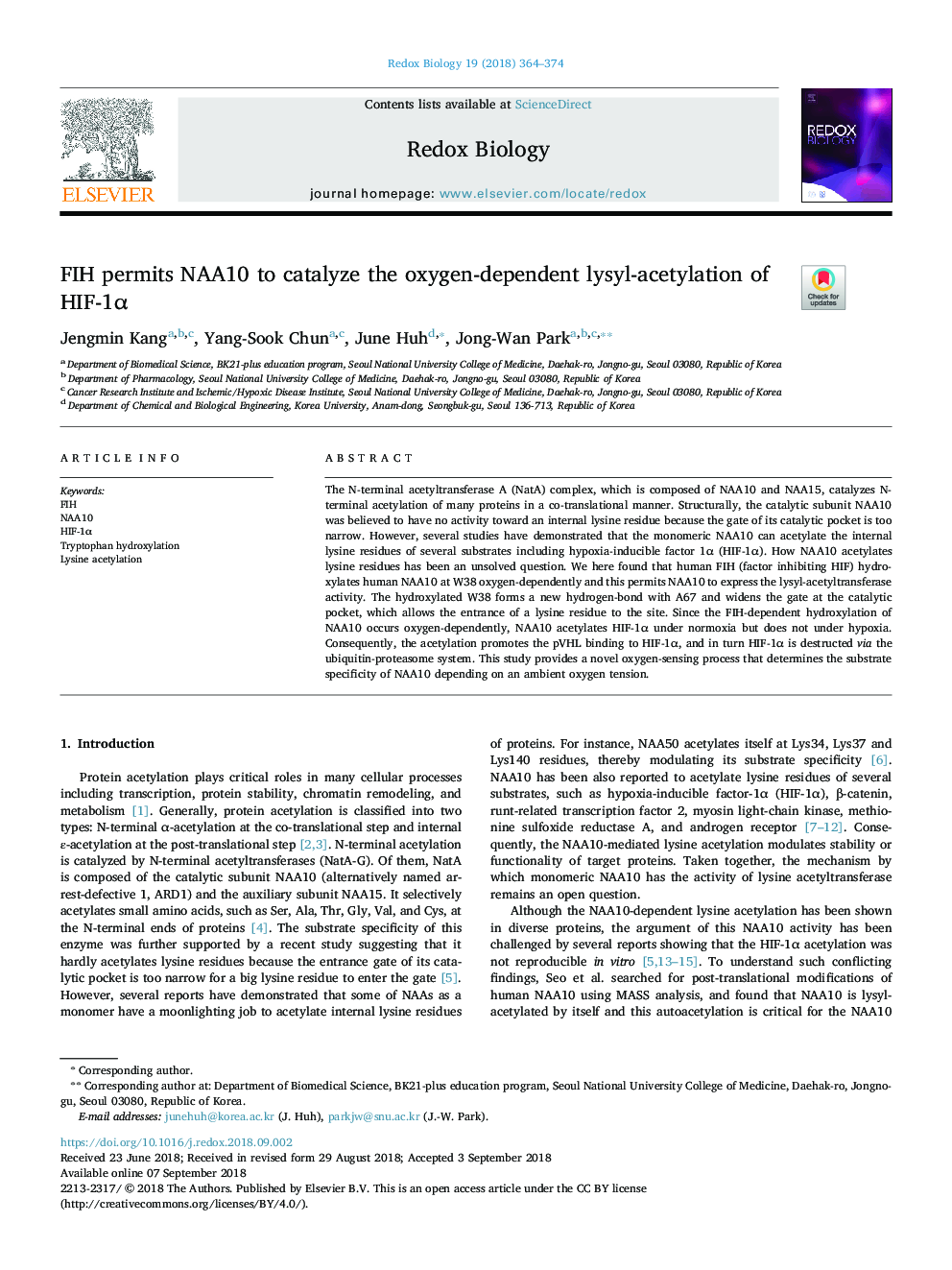| کد مقاله | کد نشریه | سال انتشار | مقاله انگلیسی | نسخه تمام متن |
|---|---|---|---|---|
| 9954066 | 1535831 | 2018 | 11 صفحه PDF | دانلود رایگان |
عنوان انگلیسی مقاله ISI
FIH permits NAA10 to catalyze the oxygen-dependent lysyl-acetylation of HIF-1α
دانلود مقاله + سفارش ترجمه
دانلود مقاله ISI انگلیسی
رایگان برای ایرانیان
موضوعات مرتبط
علوم زیستی و بیوفناوری
بیوشیمی، ژنتیک و زیست شناسی مولکولی
سالمندی
پیش نمایش صفحه اول مقاله

چکیده انگلیسی
The N-terminal acetyltransferase A (NatA) complex, which is composed of NAA10 and NAA15, catalyzes N-terminal acetylation of many proteins in a co-translational manner. Structurally, the catalytic subunit NAA10 was believed to have no activity toward an internal lysine residue because the gate of its catalytic pocket is too narrow. However, several studies have demonstrated that the monomeric NAA10 can acetylate the internal lysine residues of several substrates including hypoxia-inducible factor 1α (HIF-1α). How NAA10 acetylates lysine residues has been an unsolved question. We here found that human FIH (factor inhibiting HIF) hydroxylates human NAA10 at W38 oxygen-dependently and this permits NAA10 to express the lysyl-acetyltransferase activity. The hydroxylated W38 forms a new hydrogen-bond with A67 and widens the gate at the catalytic pocket, which allows the entrance of a lysine residue to the site. Since the FIH-dependent hydroxylation of NAA10 occurs oxygen-dependently, NAA10 acetylates HIF-1α under normoxia but does not under hypoxia. Consequently, the acetylation promotes the pVHL binding to HIF-1α, and in turn HIF-1α is destructed via the ubiquitin-proteasome system. This study provides a novel oxygen-sensing process that determines the substrate specificity of NAA10 depending on an ambient oxygen tension.
ناشر
Database: Elsevier - ScienceDirect (ساینس دایرکت)
Journal: Redox Biology - Volume 19, October 2018, Pages 364-374
Journal: Redox Biology - Volume 19, October 2018, Pages 364-374
نویسندگان
Jengmin Kang, Yang-Sook Chun, June Huh, Jong-Wan Park,